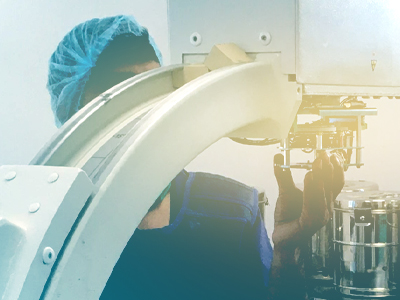Overview
Learn to analyze and interpret human motion capture (MOCAP) data of body segments for more anatomically accurate results and better interventions in clinical and sports applications.
This course is intended for those working with biomechanical movement analysis in sports, rehabilitation, orthopedics or physical therapy, who use kinematics to quantitatively evaluate human motion in 2D or 3D.
Quantitative human movement analysis is fast becoming a standard tool in clinics and sports labs. However, many of the available tools yield generic reporting without clear information on the underlying data processing principles. This can lead to misinterpretations which could result in incorrect advice regarding training, correction, or even surgical intervention.
The knowledge offered in this course will help you give better guidance based on quantitative data analysis.
You will gain insight in, and program, the algorithms behind commonly presented movement data results. You will recognize the pitfalls of the procedures and become aware of misinterpretation of data and be able to differentiate between “real” joint motion and “analysis-induced” joint motion results.
After taking this course you will be able to perform your own analysis and interpret your own results or those produced by others, including automated systems (such as Vicon Plug-in Gait).
 Visualization Tools |
What You'll Learn:
After completing this course you will be able to:
- define and calculate local joint coordinate systems
- use and understand different calibration methods and their limitations
- translate technical motion descriptions into clinical terminology
- perform your own analysis
- recognize pitfalls and misinterpretations in kinematic analysis results
What Our Learners Say
“A really useful course to know about human movement analysis in more depth. The course was quite interesting and explored a different section of motion analysis. I was able to understand more about the local and global coordinate system and the different techniques used in the analysis.”
“It was a hugely positive experience for me. I had to learn Python and had a recap on kinematics calculations in the same course for which I am grateful. The theory was excellent and well taught through online videos and materials. The lectures were awesome, and the instructors explained the materials when we had questions.”
“It was very interesting to learn more about this subject and get a better understanding of the field of biomechanics. The course introduced topics of research and theory that I have not thought of. Overall, it was a great experience, and I wished the course was about a week longer to spend more time on the interpretation of data.”
Sample video lectures
 Watch sample video lectures
Watch sample video lectures
Details
The interpretation of human 3D motion data is not straightforward. This is because 1) the calculus behind the analysis is complex; 2) there is no good model for the translation of technical calculation results into conventional kinesiological terminology; and 3) the interpretation of data requires a continuous link between results and human anatomy.
This course will take you through the steps of calculating joint and segment motion, making you aware of all the assumptions and model decisions that influence the final results.
You will compare your results with those of others and data from the literature, helping you to understand how to “read” your results and interpret them in the light of the underlying research question: Are your results the representation of an existing joint (mal)function, a calculation error, or simply a reflection of your model assumptions?
After you finish this course you will find it easier to read and critically interpret the literature and to analyze and correctly interpret your own data. When needed, you will have the tools to do your own analysis in Python (used in this course) or MATLAB.
Course Syllabus
The course consists of five modules:
1. The pose of a Rigid Body
- Pose = position and orientation: the 2D case
- Using a local coordinate frame in 2D
- Defining a local coordinate frame in 3D
2. Rotations in 3D
- Creating rotation matrices in time series from marker trajectories
- Do Cardanic or Eulerian angular decomposition
- Understand that sequence matters and why
3. Two body segments in 3D
- Calculation of joint angles of upper body segments
- Anatomical (bony) references
- Easy referencing using a standard position
4. Recap and Workflow
- Gait analysis of lower extremity
- Workflow
- Motion capture with markers
5. Calibration methods
- Anatomical, technical, reference position
- Functional coordinate systems
- Helical axis
Frequently Asked Questions (FAQ)
Do I need to be an expert in Python?
You will be doing your own programming but will be given specific modules for some of the necessary calculations. The first week of the course will include a tutorial of Python programming skills required for the course. Experience in programming is therefore needed, but you do not need to be a Python expert. If you would like to assess your level of understanding of Python, you can try this or similar websites and focus specifically on Python basics and NumPy.
How much detail should I know about human anatomy?
We expect you to know the terminology and the structure of the extremities at the level of first year sports sciences, physical therapy or medicine. Passive knowledge is sufficient.
Do I have to collect data myself?
No, we will provide real data collected using an optical-electronic system (Vicon) that you can use to do all the exercises.
Qualifications
Certificates
If you successfully complete this course you will earn a professional education certificate and you are eligible to receive 3.0 Continuing Education Units (CEUs).
Chartered Engineering Competences
All our online courses and programs have been matched to the competences determined by KIVI’s Competence Structure, a common frame of reference for everyone, across all disciplines, levels and roles.
These competences apply to this course:
- A1: Extend your theoretical knowledge of new and advancing technologies.
Admission
This course is primarily geared towards working professionals.
Prerequisites
- Basic knowledge of linear algebra
- Knowledge of the human skeletal anatomy
- Basic knowledge of programming (Python) – If you would like to assess your level of understanding of Python, you can try this or similar websites and focus specifically on Python basics and NumPy.
Contact
If you have any questions about this course or the TU Delft online learning environment, please visit our Help & Support page.



